Buddha, Meditation, Medicine
LAMA JIGMES FREE TIPS
Lama Jigme a refreshing encounter Episode Lama Jigme Gyatso is an ordained monk in an age when many are content to hide behind tradition, hearsay, dogma and circular reasoning it can be refreshing to encounter someone like him. Taking his teachers instructions to heart, he practices and transmits the Buddhas teachings in an essentialized and pragmatic manner that is as profoundly effective as it is deeply practical.
Who is Lama Jigme ?
Ordained as Lama Jigme Gyatso: Rime Manipa Tantrika, which translates as “Ocean of Courage Teacher; ” he is a Jewish-american born, Tibetan-buddhist: Monk, Teacher, Healer and Tantrika.
Lama Jigme was taught to be devoted to the Buddha of Compassion {Manipa} in a NON-sectarian manner {Rime} that practices Sutra’s union of compassion and insight as well as the union of Tantra’s paths of devotion, imagination and sensuality {Tantrika}.
In an age when many are content to hide behind tradition, hearsay, dogma and circular reasoning this controversial and unconventional teacher insists that a true Lama’s resume, credentials and letters of recommendation are the vastness of his Compassion, the profundity of his Insight and the power of his Effectiveness.
Lama Jigme Gyatso has had the very good fortune to receive teachings from every major Buddhist lineage of the Theravada, Mahayana and Tantric traditions.
Taking his Lama’s instructions to heart, he practices and transmits the Buddha’s teachings in an essentialized manner that is as profoundly effective as it is deeply practical.Interessen:Lama Jigme is playful and dynamicas well as loving and insightful.
Just as the alchemists of legend turned lead into gold, instructions received from this precious teacher can transform sorrow, anger, and fear into peace, love, joy and bliss.
CULTURE, RELIGION, ETHNOMEDICINE
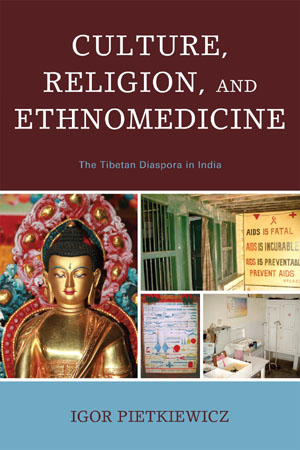
>> John Paul II Hospital & Research <<
The > Jagiellonian University < (Polish: Uniwersytet Jagielloński, often shortened to UJ; historical names: Latin: Studium Generale, Kraków Academy, The Main Crown School, Main School of Kraków, Kraków University) was established in 1364 by Casimir III the Great in Kraków. It is the oldest institution of higher education in Poland, the second oldest university in Central Europe and one of the oldest universities in Europe.
Culture, Religion, and Ethnomedicine discusses various interdependencies between culture, religion, and health with a concentration on Tibetan culture. Igor Pietkiewicz uses an example of the Tibetans in exile to explain how culture affects illness behavior, including perception of sickness and treatment methods, as well as the choice of an appropriate cure. The book also touches upon the problem of migration and various risk factors associated with adjustment of ethnic minorities in a host country. It elaborates on the issues not limited to a single refugee community, but universal in a world that is becoming a global village. Students planning to do qualitative research in social sciences will find this book valuable. Students can learn how to select data and get information about data sources, analysis, and management from the chapter on qualitative research methodology. This book will also be helpful to health practitioners who treat individuals representing other cultures as well those interested in health issues in multi-cultural settings.
Igor Pietkiewicz, Ph.D., is a Polish psychotherapist and researcher at John Paul II Hospital in Krakow. He is lecturer at Jagiellonian University where he has designed and taught university courses on medical anthropology and thanatology. He cooperates with the Division of the Psychology of Religion and School of Medicine in English (Jagiellonian University). Founder and president of the Polish Medical Anthropology Association.
CONTENTS:
Chapter 1: Tibetan Culture, Religion, and Acculturation
Levels and Dimensions of Culture. Religion as an Important Component of Culture. Culture in Transition. Typologies of Migration. Refugees as a Distinct Category of Migrants. Acculturation. Factors Affecting Acculturation.
Chapter 2: Health and Illness Behaviors
From Biomedicine to Holism. Biomedical Model. Humanistic Model. Holistic Model. Interdependence between Culture and Health. Culture as a Salutary Agent. Healthy Behaviors. Culture and Identity. Culture as a Means of Social Support. Culture as a Pathogenic Agent. Unhealthy Lifestyles. Acculturative Stress. Identity Confusion. Culture as a Pathoplastic Agent. Culture as a Meaning-Making Device. Idiom of Health and Ill-Health. Folk Categories and Explanatory Models. Illness Behavior. Help-Seeking Behavior. Help-Seeking Pathways.
Chapter 3: Religion and Health
Interdependence between Religion and Health. Religion and Mental Health. Overview of the Research Findings. Religion as a Salutary Agent. Mechanisms for Religion‘s Effects on Health. Religion as a Source of Coping Strategies. Religious Coping in Empirical Studies. Predictors of Religious Coping. Pathogenic and Pathoplastic Functions of Religion.
Chapter 4: Tibetan Buddhism in Tibet and in Exile
History of Tibetan Buddhism. Hinayana, Mahayana, Vajrayana: Three Paths of Dharma. History of Buddhism in Tibet. The Cultural Revolution. Key Teachings of Dharma. The Truth of Suffering. The Truth of the Causes of Suffering. The Truth of the Cessation of Suffering. The Truth of the Path. Coping with Suffering. Taking Refuge. Calm-Abiding Meditation. Tong len. Purification and Two Accumulations. Dharma in Everyday Life. Religious Institutions in Exile.
Chapter 5: The Traditional Tibetan System of Medicine in Tibet and in Exile
Health-Related Problems among the Tibetan Diaspora. Professional Healthcare in Tibet and in Exile. History of the Traditional Tibetan System of Medicine. Fundamental Concepts of Tibetan Medicine. Diagnosis in Tibetan Medicine. Treatment in Tibetan Medicine. Tibetan Medicine and Demonology. Tibetan Medicine and Astrology.
Chapter 6: Empirical Research
The Sample. The Research Context. Methodology and Method. Qualitative Methods. Grounded Theory. Methods of Data Collection. Qualitative Data Analysis. Coding Qualitative Data. Procedures for Data Collection. Planning the Research Process.
Chapter 7: Presenting and Analyzing the Qualitative Data
Support and Treatment Methods. The Traditional Tibetan System of Medicine. Paramedical Solutions. Western Allopathic Medicine. Factors Affecting Illness Behavior. Age Factor. Severity of Symptoms and Duration of Treatment. Economic Effects Factor. Treatment Availability Factor. Idiom of Disease. Views on Treatment Methods. Three Levels of Acculturation. Educational Background. Grounded Theory of Illness Behavior.
Chapter 8: Discussion and Conclusions
The Idiom of Disease in the Tibetan Community. Perception and Assessment of Treatment Methods. Common Help-Seeking Pathways. Variables Affecting Illness and Help-Seeking Behavior. Religion and Illness Behavior. Conclusions.
DREPUNG LOSELING – Basic of Meditation
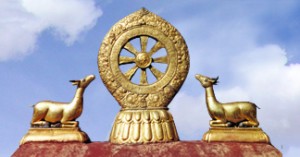
Affilate to Emory University & North American Seat of Drepung Monastery
Our Buddhist Studies and Practice program is designed to provide instruction and practical training at beginner’s, intermediate, and advanced levels. We offer a number of free, weekly opportunities to learn about meditation and Buddhism, as well as more formal taught courses. We are fortunate to have highly qualified teachers, most of whom come from and were educated at Drepung Loseling Monastery in India.
Newcomers are recommended to start with our monthly “Basics of Meditation” sessions, held on the first Sunday of each month, from 11:00am-12:00 noon. Other regular events include the Tuesday night Medicine Buddha practice (6:30-7:15pm) and public talk (7:30pm-9:00pm), and Sunday morning > shamatha meditation < practice (11:00am-Noon). We also have a monthly Guru Puja and Tsok. All these events are free of charge and open to everyone.
On top of our regular schedule, we offer a number of special courses, lectures, workshops, and empowerments. Please check our calendar for these, or subscribe to our email list to receive news and updates on events.
ADVAITA ON ZEN AND TAO
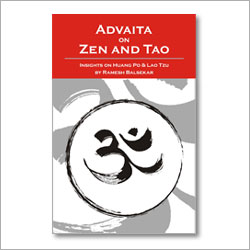
> Advaita On Zen And Tao – Book <
Insights On Huang Po And Lao Tzu
We are at a unique moment in the evolution of spirituality. For centuries, sages of various traditions around the world have been expressing the Truth of non-duality; and their disciples have been faithfully preserving the teachings and passing them on. But it is only now, in this era of advances in mass communication, that it has become possible for a living sage of one tradition, to produce commentaries inspired by the mystical traditions of another.
Imagine if > Chuang Tzu < had written a commentary on the > ‘Bhagavad Gita’ < , or if the sage Jnaneshwar had produced reflections on the > ‘Heart Sutra’ < ! Within these pages a similar dream has been realised – commentaries on the teachings of the revered > Zen Master Huang Po <, and a modern ‘Book of the Way’ inspired by Lao Tzu’s ‘Tao Te Ching’, both written by Advaita Master Ramesh S. Balsekar.
The repetition of tradition cannot be termed as wrong, but when the teaching is embodied the teacher is at liberty to put it in his own words instead – because he is It.
Ramesh’s words bridge the apparent gap of centuries and geographical boundaries, revealing the hidden Truth behind the illusion of time and space: Advaita, Zen, and Tao.
Ramesh Balsekar, author of over 20 books, discusses the Indian philosophy of Advaita daily at his residence in Mumbai, with visitors from around the world. The basic concept is that “all there is, is Consciousness;” all actions are happenings, the functioning of the Primal Energy, and not the doing by anyone. He has a unique focus on what we all have to deal with in our daily living. His teaching has impacted the lives of many people.
TRADITIONAL YOGA STUDIES (T.Y.S.)
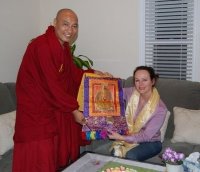
> Y.R.E.F. -Yoga Research and Education Foundation <
> THE YOGA TRADITION < > YOGA IM BUDDHISMUS <
PDF: >> „108 Things You Can Do To Help the Environment„<< – Please take the time to read the amazing document and send it to those you feel could benefit from it.
Green Dharma by Georg and Brenda Feuerstein >>FREE PDF DOWNLOAD <<: It brings us joy to make Green Dharma a free download for two simple reasons:
First, the environmental crisis is extremely severe, and green action is of the utmost urgency. We are hoping that our book might stimulate its readers into appropriate attitudinal change and responsible action. Publishing this book through regular channels would take too long to reach the public, as well as destroy a large number of trees and add to pollution.
Second, we feel it is more appropriate to not charge for a book that shares the Buddha Dharma.
If you wish to donate to TYS, please click on the button below. Your gift will be used to further our work on the environmental and social crisis. Alternatively, you may send a cheque to TYS, P.O. Box 661, Eastend, SK S0N 0T0, Canada.
PAYUL LING – Trad. Bhuddist Yoga Centers
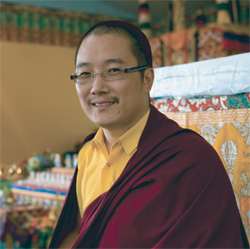
His Holiness Karma Kuchen Rinpoche
>> Guru Yoga, Meditation Teaching <<
Importance of the Oral Transmission
A Teaching given by H.H. Penor Rinpoche in Berkeley, California July 19, 1996
Regardless of the particular level of teaching or practice that we are discussing in the Buddhist tradition, whether it be Hinayana, Mahayana or Vajrayana, the process of spiritual development is one of the student relying upon a teacher. We may call that teacher a lama, a guru, or whatever, but the essential point is that there is an oral transmission that takes place in which a teacher teaches the student: the student listens to the teachings, absorbs their meaning and puts them into practice.
There is a reason for this emphasis on an oral transmission. From the time of the Buddha up to the present day, the buddha dharma has always been transmitted and meant to be transmitted orally, ensuring that there is a living tradition that is still embued with the blessing and power of the original teachings. It also guards against the possibility of so-called teachers simply coming up with their own ideas. Instead, the teacher passes on a proven tradition of teachings.
This makes the buddha dharma different from other kinds of learning where it may be possible for people to innovate. In such realms of learning it may be appropriate to come up with new systems of thought or to introduce new ideas. But when we are talking about the buddha dharma, every teaching must connect with the original teachings of the Buddha in order for a teaching to be valid. The teachings cannot be something that someone is simply coming up with on their own. The teachings are something that the teacher passes on.
Similarly, in other types of human knowledge it may be permissible to present information in a manner as entertaining and pleasing as possible. But although it is important for dharma teachings to be presented in a manner which is pleasant to hear, it is most important that the transmitted teachings have the power to bless and influence those who hear them in a positive way – not only in this lifetime, but in future lifetimes as well. So even though the teaching of the dharma should be elegant and well-presented, what is most important is the blessing of the essential message.
Palyul Centers are located around the globe, providing the facilities for learning and practicing the teachings of the Buddha.
THE BOOK OF TIBETAN MEDICINE
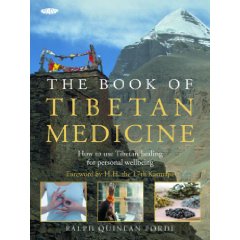
> The Book of Tibetan Medicine: <
How to Use Tibetan Healing for Personal Wellbeing by Ralph Forde (Author)
His Holiness The 17th Karmapa: >> KARMAPA NEWS <<
Tibetan Medicine is an ancient medical system that has been successfully practiced for over 1,000 years. A holistic approach combining dietary and behavioral changes, herbal cures, massage and meditation, this unique approach to healing utilizes the ancient wisdom of Tibetan masters. As well as the science of Tantric Buddhism. The Book of Tibetan Medicine is now available in 11 languages worldwide. Forward written by His Holiness The 17th Karmapa.
VIDEO: (http://buddhistcharity.ning.com/video/the-book-of-tibetan-medicine)
The Book of Tibetan Medicine: How to Use Tibetan Healing for Personal Wellbeing by Ralph Forde (Author), Product Description:
Welcome this first and most comprehensive guide to Tibet’s ancient integrative healing system-one of the world’s oldest forms. The Book of Tibetan Medicine provides a thorough overview of the origins and practices of this holistic approach and explains how it can contribute to maintaining overall health and happiness. You will learn how to balance body, mind, and spirit through diet, behavior, yoga, herbalism, acupuncture, Buddhist relaxation techniques, and medicines derived from natural sources. By taking an especially in-depth look at contemporary ailments-including stress and allergies-this highly accessible and lushly illustrated manual brings Tibet’s age-old and traditional discipline into the here and now, with invaluable advice on how to use it to improve your well-being.
About the Author
Ralph Quinlan Forde is a holistic medical consultant and health writer and a qualified herbalist and aromatherapist. He writes for Ultimate Health magazine, What Medicine, The Independent on Sunday and New Scientist.
THE THREE VEHICLES

Khentrul Ogyen Rinpoche: THE THREE VEHICLES
> BUDDHIST CHARITY by Ogyen Ling Buddhist Network <
> Essence of the Heart Sutra: The Dalai Lama’s Heart of Wisdom Teachings < by The Dalai Lama (Author), Thupten Jinpa Ph.D. (Translator) <
„The difference between the wise Buddhist and the sectarian Buddhist is like that between the vastness of space and the narrowness of a vase.“ -Kongtrul Rinpoche
INTRODUCTION
„Somebody once asked how one could fit together various traditions that represented the Buddha’s teaching. One can think of Buddha’s Dharma as a wonderful seed planted in the earth, out of which has blossomed a tree with deep roots, great branches, leaves, flowers, and fruits. Sometimes a person might point to the roots and say that it is just here that we can find the real Dharma, while someone else might say, „Oh no it is in the flowers,“ and still another will say that it is to be found in the fruit. But, of course, these different parts cannot really be separated; the roots sustain the tree in their way, and the fruit depends on the roots and leaves and branches as well.“ -Lama Govinda
In order to clarify the variations between the many different schools and traditions of Buddhism, the schools are often divided into the three Yanas (Skt.), meaning ‚Vehicles‘ or ‚Paths‘. These three are; the Hinayana, Mahayana and Tantrayana.
Within the various vehicles, much variation can still exist, which is further explained in the pages that deal with the traditions, like Zen and Tibetan Buddhism.
A major reason for this development of different schools within Buddhism may be that the Buddha taught for decades. Given the vast amount of teachings it is not easy to unanimously decide what the exact interpretation of all teachings should be, or even how to summarise hem logically.
Depending on who the Buddha would be teaching to, the explanation would be quite different and sometimes seemingly contradictory. This can be understood as skilful means; a satisfying explanation to a learned philosopher is probably too complex for an uneducated person. On top of this, the Buddha clearly stated that he did not just intend to teach a doctrine, but intended to show the path that people can follow for their own development. This intention ultimately leads to the point where every individual has to decide which practices to follow and how to interpret the teachings, rather than adhering to a fixed doctrine.
PAGE CONTENTS :
Introduction
The Three Councils
Theravada and Hinayana
Mahayana
Tantrayana
Do these traditions contradict?
FOREST SANGHA – Dhamma Teaching
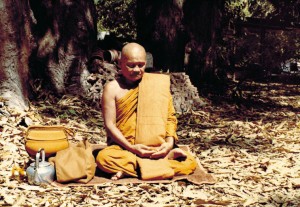
The Dhamma Encyclopedia is the largest Theravada Buddhist encyclopedia
This Forest SANGHA site functions as a portal page for the monastic communities of disciples of Venerable Ajahn Chah, particularly in the West.
Currently the management of this site is undertaken at > Aruna Ratanagiri Buddhist Monastery in Northumberland <, UK. We have been operating this forestSangha website since Vassa 2001.
The Sangha is always concerned that Dhamma teachings are both readily and responsibly made available. In the case of this presentation should you have any difficulties or if you wish to offer feedback please do contact us.
It is important to us that no charge be made for these Dhamma teachings. If there is any further way that we can serve the Sangha we hope you will let us know.
Teachings by Ajahn Chah-
- Bodhinyana
- A Taste of Freedom
- Living Dhamma
THE HOLY BODHI TREE
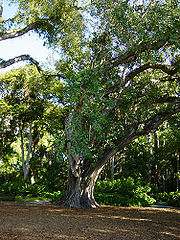
>> BODHI TREE – Pappelfeige <<
(Heiliger Feigenbaum; Bodhi-Baum; Ficus religiosa)
> Hildegard v. Bingen-PHYSIKA ,De Arboribus.About Trees, Chap. 3 <
>> THE BODHI TREE & GAUTAMA <<
The Bodhi Tree, also known as Bo (from the Sinhalese Bo), was a large and very old Sacred Fig tree (Ficus religiosa) located in Bodh Gaya (about 100 km (62 mi) from Patna in the Indian state of Bihar), under which Siddhartha Gautama, the spiritual teacher and founder of Buddhism later known as Gautama Buddha, achieved enlightenment, or Bodhi. In religious iconography, the Bodhi tree is recognizable by its heart-shaped leaves, which are usually prominently displayed. It takes 100 – 3,000 years for a bodhi tree to fully grow.[citation needed]
The term „Bodhi tree“ is also widely applied to currently existing trees, particularly the Sacred Fig growing at the Mahabodhi Temple, which is allegedly a direct descendant of the original specimen. This tree is a frequent destination for pilgrims, being the most important of the four main Buddhist pilgrimage sites. Other holy Bodhi trees which have a great significance in the history of Buddhism are the Anandabodhi tree in Sravasti and the Bodhi tree in Anuradhapura, Sri Lanka. Both are believed to have been propagated from the original Bodhi tree.
In den Berichten des Buddha über seine Erleuchtung ist mit keinem Wort davon die Rede, daß ihm die Erkenntnis unter einem Baum gekommen sei. Einige Buddhismus-Forscher halten daher den Baum als Ort der Bodhi für ungeschichtlich und mutmaßen, daß vorbuddhistische Baumkulte in den Buddhismus Eingang gefunden hätten. Aber ist es nicht völlig natürlich, daß ein hausloser Wandermendikant, wo immer er sich niederläßt, dies unter einem Baum tut, der ihn nachts vor dem Tau und tags vor der subtropischen Sonne beschirmt? Daß Siddhattha seine zur Erleuchtung rührenden Betrachtungen am Fuß eines Baumes anstellte, muß man als selbstverständlich ansehen, und daß er diesen Baum, der zufällig ein Assattha war, an seinen herzförmigen Blättern mit der langen, seitlich abgebogenen Spitze als Assattha oder Pippala erkannte und dies, zum Buddha geworden, vor seinen Mönchen beiläufig erwähnte, hat so hohe Wahrscheinlichkeit, daß man es getrost als historisch ansehen darf.
RigDzin Dharma Foundation Buddhist Dharma

Venerable Traga Rinpoche
Spiritual Director
OM MANI PADME HUNG
Rig Dzin Dharma Foundation is a Tibetan Buddhist Dharma Center located in the heart of Albuquerque, NM. Founded in 2005 by the Venerable Traga Rinpoche, a beloved lama in the Drikung Kagyu lineage of Tibetan Buddhism, the Center offers a relaxed and informal place for meditation and learning about Buddhism. Everyone is welcome to visit – whether you are a new practitioner, curious to learn a little about Buddhist teachings or meditation, or a more experienced student of the Dharma. Classes and practices, or to learn more about us. Always feel free to call us or come by for a visit.
Click these link for more information: http://www.rigdzin.com/index.htm
Lama Thubten Yeshe – Discovering Buddhism

>> DISCOVERING BUDDHISM <<
The Discovering Buddhism Series is designed to be viewed on its own or as supplementary material for anyone following the Discovering Buddhism at Home program. Each of the thirteen 30 minute segments is introduced by Richard Gere or Keanu Reeves.
>> Lama Thubten Yeshe << (1935–1984) was a Tibetan lama who, while exiled in Nepal, co-founded Kopan Monastery (1969) and the Foundation for the Preservation of the Mahayana Tradition (1975). He followed the Gelugpa tradition, and was considered unconventional in his teaching style.
Lama Yeshe was born near the Tibetan town of Tolung Dechen, but was sent to Sera Monastery in Lhasa at the age of six. He received full ordination at the age of 28 from Kyabje Ling Rinpoche. Jeffrey Paine reports that Lama Yeshe deliberately refused the geshe degree, despite having studied for it:
Many years later, when pressed why he had shunned this prestigious degree, he would laugh: „And be Geshe Yeshe?“[1]
Sera Monastery did award him an honorary geshe degree in the early 80s. He also used to joke that he was a Tibetan hippie: „I dropped out!“
Gorakshanath the Originar of Hatha-Yoga
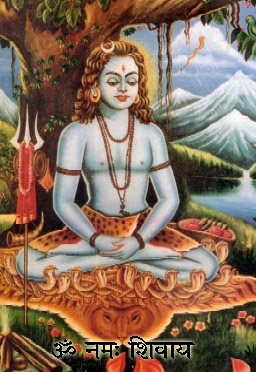
Gorakhnath or Gorakshanatha Saivism is also known as Siddha Siddhanta and Nath tradition. It was founded by Gorakshanatha (Gorakhnath) who lived about 10th century AD. He is believed to be 3rd, 4th or 5th in a line of 12 prominent teachers of this tradition, which has followers in both Buddhism and Hinduism.
He was said to be a disciple of Matsyendranatha who was from in Nepal. Followers of this tradition believe that knowledge of this tradition was received by Matsyendranath directly from Siva himself. Gorakshanatha is credited with such works as Siddha Siddhanta Paddhathi and Viveka Martanda. He composed them in Hindi. He also created 12 monastic orders across Northern India in an effort to preserve the Adinatha tradition.
Other important works of this tradition are Hatha Yoga Pradipika, Gheranda Samhita, Siva Samhita and Jnanamrita.
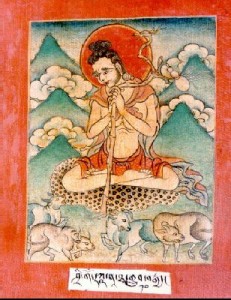
Also known as Gorakhnath – regarded as the originator of hatha yoga!
The school was predominantly ascetic and adapted many practices of the Pasupatha tradition and the Adinatha Tradition in contrast to the Nandinatha tradition followed in the south. Although it is a tantric tradition, it differs from many left-handed (vamachara) schools of tantra with its uncompromising emphasis on the practice of brahmacharya or celibacy and its stand against the use of sexual energy in yogic practices. In the past this tradition enjoyed some Muslim following in the northern India and some of them even became heads of monasteries.
The Gorakshanatha tradition brought to light many secrets of hatha yoga, kundalini yoga and samadhi and contributed to their present day popularity. Members of this tradition also dabble in occult sciences and siddhis or super natural powers.
Followers of this tradition believe that it would be possible through yogic practices to prolong human life and become immortal in the physical body (kayasiddhi). They believe that through the practice of hathayoga it is possible to channel breath energy through a web of nerves or nadis and acquire occult powers as well as achieve liberation. No one knows for sure what these practices are except those who have been initiated into them. Some followers of this tradition claim to have seen or interacted with beings who are several hundreds of years old. There are claims that Gorakshanatha, the original founder of the school, is still alive and active in our earth plane but does not appear in public.
Followers of the tradition believe that Siva is the material and efficient cause of creation and that after liberation the jivas would return to Siva, like bubbles in water. Oneness with Siva can be experienced by serious practitioners of yoga in a deep state of samadhi. Once the state of samadhi is reached, an individual would remain forever established in transcendental consciousness even while engaged in the mundane affairs of the outside world.
The tradition is still active in many parts of India and abroad and its followers range from mendicants and street magicians to the most obscure ascetics living in the Himalayas.
The popularity of hatha yoga, pranayama, kundalini yoga, holistic medicine, astrology and ayurveda in the modern world can be attributed to a great extent to this tradition.
The International Nath Order is draws its inspiration from the ancient Natha tradition, although it strives to propagate its teachings mostly outside India.
It was founded in 1978 by Guru Mahendranath in order to share the knowledge of his own spiritual awakening and also the wisdom of the ancient tantric schools of Hinduism and Buddhism.
SHAMBHALA … ein Geschmack von Weisheit

>> TAI CHI VEREIN SHAMBHALA <<
25 Jahre Shambhala… ein Geschmack von Weisheit
17.-20. September, Fest, Kurzworkshops, Vorträge, Rituale…
Wir feiern mit Euch!
Wie es so geht im Leben – man reibt sich die Augen und schaut verwundert auf 25 Jahre gemeinsames Tun und Verwirklichen einer Vision zurück.
Und wir – der Vorstand, alle unsere Shambhala Lehrerinnen und Lehrer, Mitarbeiter und Mitarbeiterinnen des Büros, unsere Gastlehrer und Gastlehrerinnen, Ausbildner und Ausbildnerinnen sind einen langen, intensiven, oft auch turbulenten Weg miteinander gegangen – mit Euch – unseren Schülerinnen und Schülern, Begleiterinnen und Begleitern über die Jahre – DANKE!
Wir wollen mit diesem Festwochenende eine Brücke schlagen in die Zukunft. Wie wird unsere Welt, dieser Planet Erde, unser aller Alltag in 25 Jahren – 2034 sein?
Wie können wir unseren Platz als Erwachsene jetzt verantwortlich einnehmen? Dreistündige Spezialworkshops werden uns von Freitag Nachmittag an durch das Wochenende führen. Spezielle Themen, die manchmal im Alltag des Praktizierens und Wachsens zu wenig Aufmerksamkeit bekommen – in diesen Tagen wollen wir das alles mit viel Spaß nähren.
25 Jahre bedeuten für uns Feiern, gemeinsam das Leben genießen und voller Zuversicht uns in die Zukunft hinein entfalten. JA!!!!!
YOGALEHRER IM HINDUISMUS
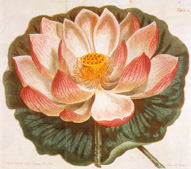
YOGALEHRER IN INDIEN
oder: “ YOGI in INDIEN „
Mit insgesamt 390 Versen stellt die Yoga-Shikha („Krone des Yoga“)-Upanishad die umfassendste Yoga-Upanishad dar. Sie besteht aus sechs Kapiteln, deren letztes einmal eine selbstständige Abhandlung gewesen zu sein scheint. Dieses > Shaiva-Werk < soll, ähnlich wie die > TANTRAS <, den spirituellen Suchern dienen, die mit den Schwierigkeiten des dunklen Zeitalters (kali-yuga) zu kämpfen haben.